Hospital Venerables
In the populous neighborhood of Santa Cruz, is the old Hospital Venerables or Hospital de Los Venerables Sacerdotes as is its full name. It was founded more than three centuries ago by Canon Justin de Neve to welcome and care for elderly and helpless clergymen. At the end of the 17th century, the Hospital factory was built on the site donated by the Duke of Veragua and thanks to generous donations from the nobility, the clergy, and social institutions such as unions and brotherhoods.
Throughout its history, the life of the building has gone through various changes, until it lost its healthcare function in the 1970s. Inside is the famous Centro Velázquez, an institution for the promotion of the figure of the internationally famous Sevillian painter Diego Velázquez. Famous Sevillian Baroque artists accompany him, such as Bartolomé Esteban Murillo, Juan Martínez Montañés, and Pedro Roldán. The rooms of the Hospital de Los Venerables are organized around its patios.
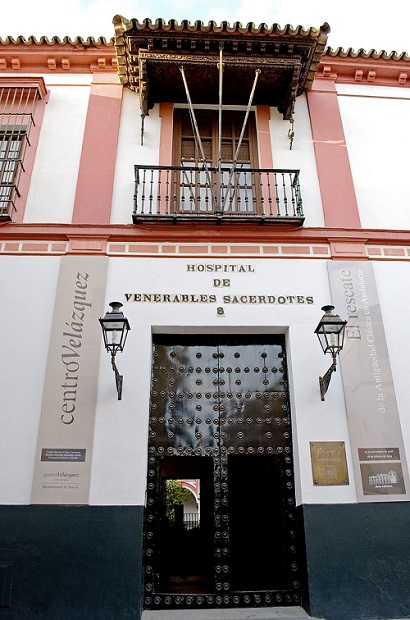
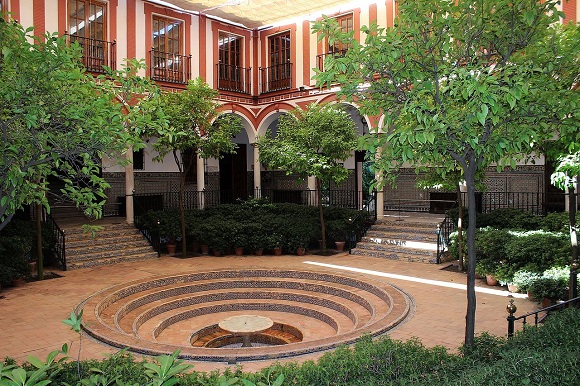
The central patio, divided into two arcaded galleries, brings together the characteristics of the traditional Sevillian patio. With limestone and reddish tones – a mixture of lime and adobe – and planted with orange trees, it houses a very particular fountain in its center. Its tiles, original of the time, add touches of blue and yellow to the room. Colors that alternate forming a multitude of geometric shapes throughout the courtyard, recalling its Andalusian heritage.
The site on which the Hospital de Los Venerables is built was previously occupied by the Doña Elvira comedy corral, sponsored by the Counts of Gelves for popular entertainment during the 16th and 17th centuries. In the corrals, great theatrical works of the time were represented, such as those by Lope de Vega, Tirso de Molina, and Miguel de Cervantes. Doña Elvira’s was one of the best-known and most frequented in Baroque Seville. Nowadays, it is an ideal place for theater events and musical shows, where the charm of the old wooden doors and the walls invaded by ivy recreate an idyllic place.
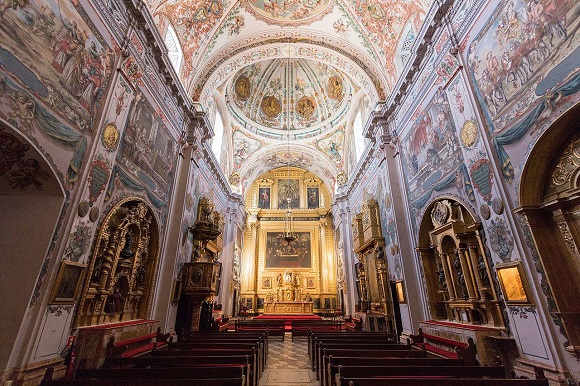
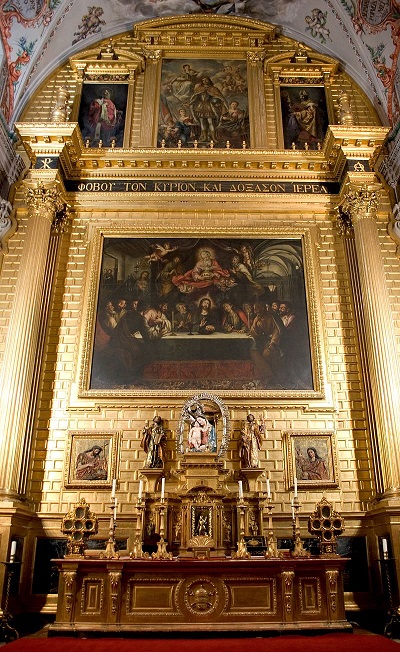
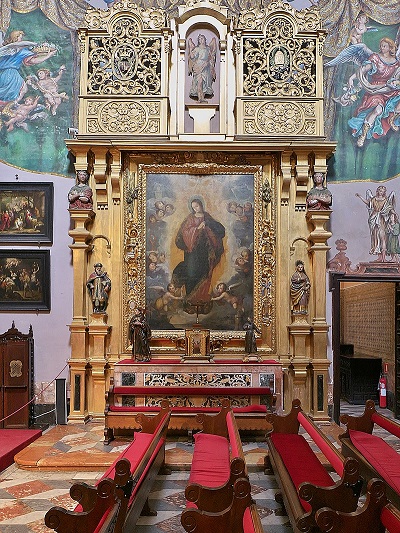
The impressive church of the Hospital de Los Venerables was used as a chapel for Eucharistic celebrations and administration of the sacraments to sick priests residing in the place. It was built at the end of the 17th century, with the help of painters such as Murillo and Valdés Leal and sculptors of the worth of Pedro Roldán. Special attention must be given to the powerful fresco paintings of the vaults and the dome. They were made with a remarkable pictorial resource: the trompe l’oeil, recreating scenes in illusory spaces extended beyond the reality of the framework that conforms them.
Beautiful scenes climb the walls of the church, blending reality and fiction. They were designed by Juan de Valdés Leal but made by his son Lucas Valdés. From the church, you can access the sacristy, a place dedicated to the custody of the sacred vessels and the sacred vestments used in religious services. Hence the presence of spacious furniture with multiple units called drawers, in addition to the cabinets for the display of liturgical ornaments.
It is in this sacristy of the Hospital de Los Venerables where the brushes, now, of Juan de Valdés Leal, surprise the visitor with a huge trompe l’oeil. It seems that the angels descending from the heights come to life. A game of imaginary architecture that continues to excite and surprise to this day despite the passing of the centuries. More

